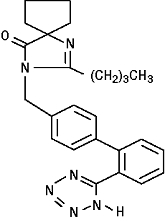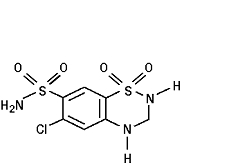Avalide Recall
Get an alert when a recall is issued.
Questions & Answers
Side Effects & Adverse Reactions
There is currently no warning information available for this product. We apologize for any inconvenience.
Legal Issues
There is currently no legal information available for this drug.
FDA Safety Alerts
There are currently no FDA safety alerts available for this drug.
Manufacturer Warnings
There is currently no manufacturer warning information available for this drug.
FDA Labeling Changes
There are currently no FDA labeling changes available for this drug.
Uses
AVALIDE® (irbesartan-hydrochlorothiazide) Tablets is indicated for the treatment of hypertension.
AVALIDE may be used in patients whose blood pressure is not adequately controlled on monotherapy.
AVALIDE may also be used as initial therapy in patients who are likely to need multiple drugs to achieve their blood pressure goals.
The choice of AVALIDE as initial therapy for hypertension should be based on an assessment of potential benefits and risks.
Patients with stage 2 (moderate or severe) hypertension are at relatively high risk for cardiovascular events (such as strokes, heart attacks, and heart failure), kidney failure, and vision problems, so prompt treatment is clinically relevant. The decision to use a combination as initial therapy should be individualized and may be shaped by considerations such as the baseline blood pressure, the target goal, and the incremental likelihood of achieving goal with a combination compared with monotherapy.
Data from Studies V and VI [see Clinical Studies(14.2)] provide estimates of the probability of reaching a blood pressure goal with AVALIDE compared to irbesartan or HCTZ monotherapy. The relationship between baseline blood pressure and achievement of a SeSBP less than 140 or less than 130 mmHg or SeDBP less than 90 or less than 80 mmHg in patients treated with AVALIDE compared to patients treated with irbesartan or HCTZ monotherapy are shown in Figures 1a through 2b.
*For all probability curves, patients without blood pressure measurements at Week 7 (Study VI) and Week 8 (Study V) were counted as not reaching goal (intent-to-treat analysis).
The above graphs provide a rough approximation of the likelihood of reaching a targeted blood pressure goal (eg, Week 8 sitting systolic blood pressure less than or equal to 140 mmHg) for the treatment groups. The curve of each treatment group in each study was estimated by logistic regression modeling from all available data of that treatment group. The estimated likelihood at the right tail of each curve is less reliable due to small numbers of subjects with high baseline blood pressures.
For example, a patient with a blood pressure of 180/105 mmHg has about a 25% likelihood of achieving a goal of less than 140 mmHg (systolic) and 50% likelihood of achieving less than 90 mmHg (diastolic) on irbesartan alone (and lower still likelihoods on HCTZ alone).
The likelihood of achieving these goals on AVALIDE rises to about 40% (systolic) or 70% (diastolic).
History
There is currently no drug history available for this drug.
Other Information
AVALIDE (irbesartan-hydrochlorothiazide) Tablets is a combination of an angiotensin II receptor antagonist (AT1 subtype), irbesartan, and a thiazide diuretic, hydrochlorothiazide (HCTZ).
Irbesartan is a non-peptide compound, chemically described as a 2-butyl-3-[p-(o-1H-tetrazol-5-ylphenyl)benzyl]-1,3-diazaspiro[4.4]non-1-en-4-one. Its empirical formula is C25H28N6O, and its structural formula is:

Irbesartan is a white to off-white crystalline powder with a molecular weight of 428.5. It is a nonpolar compound with a partition coefficient (octanol/water) of 10.1 at pH of 7.4. Irbesartan is slightly soluble in alcohol and methylene chloride and practically insoluble in water.
Hydrochlorothiazide is 6-chloro-3,4-dihydro-2H-1,2,4-benzothiadiazine-7-sulfonamide 1,1-dioxide. Its empirical formula is C7H8ClN3O4S2 and its structural formula is:

Hydrochlorothiazide is a white, or practically white, crystalline powder with a molecular weight of 297.7. Hydrochlorothiazide is slightly soluble in water and freely soluble in sodium hydroxide solution.
AVALIDE is available for oral administration in tablets containing either 150 mg or 300 mg of irbesartan combined with 12.5 mg of hydrochlorothiazide or 300 mg of irbesartan combined with 25 mg hydrochlorothiazide. Inactive ingredients include: lactose monohydrate, microcrystalline cellulose, pregelatinized starch, croscarmellose sodium, ferric oxide red, ferric oxide yellow, silicon dioxide, and magnesium stearate. In addition, the 300/25 mg pink film-coated tablet contains ferric oxide black, hypromellose-2910, PEG-3350, titanium dioxide, and carnauba wax.
Sources